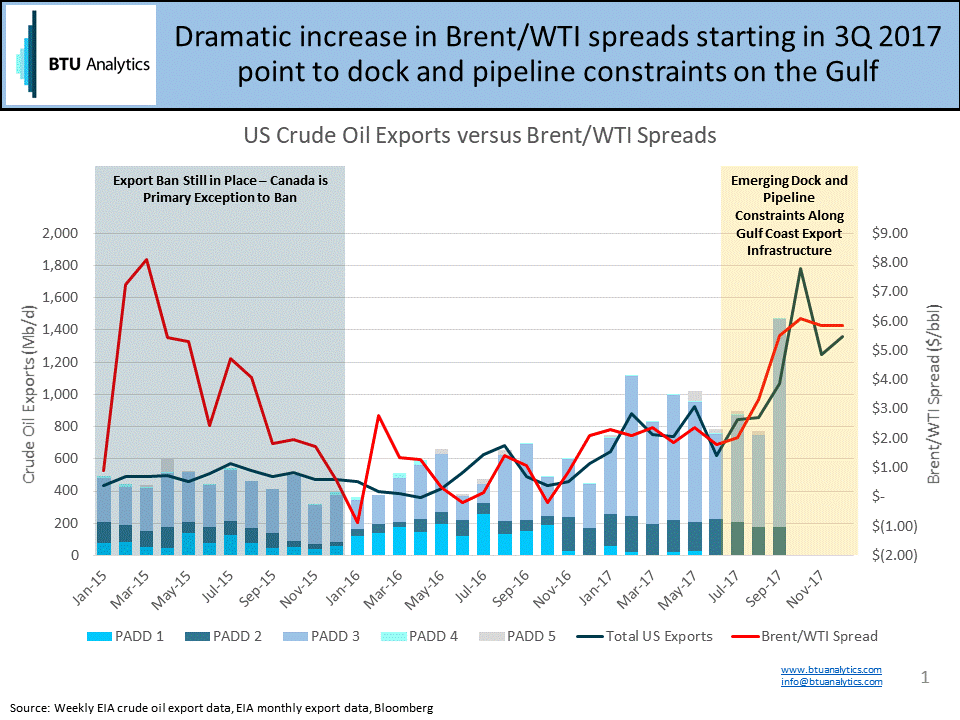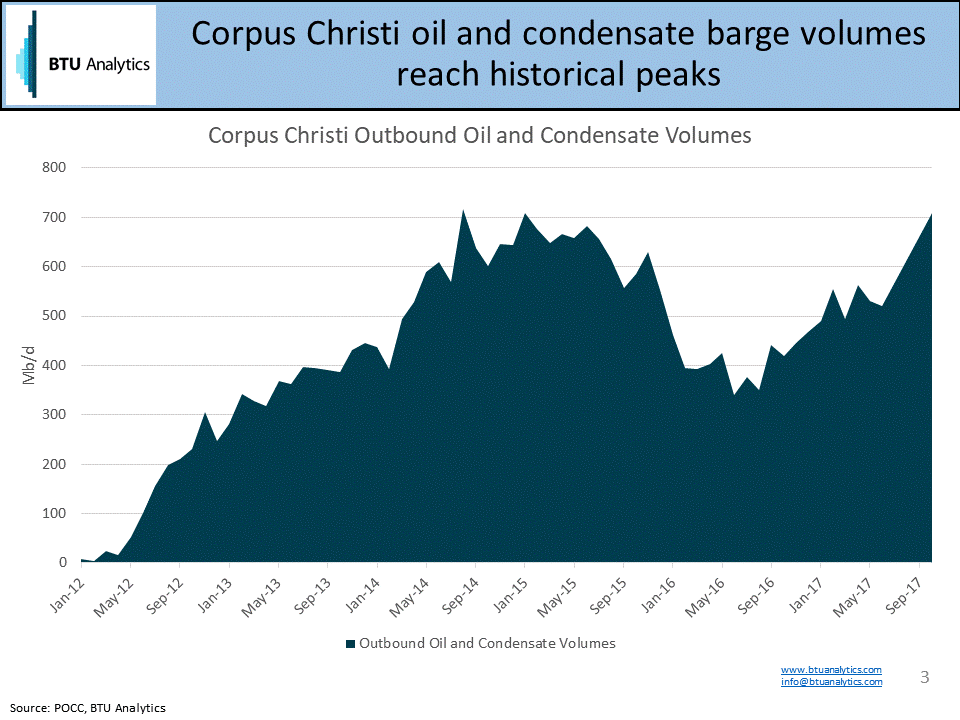In the last week, additional Permian crude oil pipeline projects have been announced bringing the total announced capacity of incremental long haul projects to over 3 MMb/d by 2020. Despite the Permian having the highest rig activity and most growth potential for US oil plays, BTU Analytics has previously highlighted the risk of overbuilding Permian long haul oil infrastructure in October. Since then, Enterprise, as well as a joint venture between P66 and Enbridge, have announced new Permian crude takeaway projects. But with so much capacity already announced, what will separate the projects that make their way to market versus those that fall by the wayside?
*First, a quick note to our readers. The cost to attend our What Lies Ahead conference will increase in early January. If you plan to register, do it sooner than later to take advantage of early-bird rates. MORE INFO HERE
Enterprise announced that it is planning to convert one of its existing NGL pipelines to crude service, bringing Enterprise’s total crude oil capacity out of the region to Houston to over 650 Mb/d. The conversion project is expected enter service in the first half of 2020. Meanwhile, the JV between P66 and Enbridge announced the new Gray Oak Pipeline. This new 385 Mb/d pipeline originates in the Permian at Crane, TX, while the end market has yet to be finalized, but proposed destinations include Corpus, Houston, and Freeport.
If the completion of all announced projects overbuilds capacity relative to production, (request a sample of BTU Analytics Oil Market Outlook to learn more about Permian oil production and individual pipeline project details), what differentiates one project from another? Why are so many Permian pipeline projects being announced? How does a producer or marketer decide which project to back? The answers to these questions are too complex and nuanced to address in a single blog, so for this commentary, we will focus on how the proposed destinations can help differentiate the projects.
Since late summer, Brent and WTI spreads have remained wide due to several factors, one of which is emerging constraints in dock and pipeline capacity serving export hubs in Gulf. The chart below shows an increasing trend in the Brent/WTI spread as US crude oil exports have increased throughout 2017, testing the limits of current dock capacity and pipeline infrastructure to move volumes around the Gulf Coast.

Houston is a major epicenter of the US crude export market and several projects to debottleneck these constraints have been announced, but the Houston Ship Channel is also a large center for moving other products besides crude as well. Therefore, there is some concern regarding long-term congestion in the Houston Ship Channel. This is likely one reason why a large number of Permian projects are being proposed to Corpus Christi. In fact, Corpus Christi is an announced destination for over 65% of new Permian oil pipeline projects.

However, Corpus is not without its challenges as well. Outbound crude oil and condensate volumes have reached historical peaks, and the port is going through a construction boom to support impending crude deliveries from the Permian Basin as well. In October, the Port of Corpus Christi and the US Army of Corps of Engineers announced an agreement to deepen and widen the Corpus Christi Ship Channel to accommodate more and larger vessels.

As new Permian pipeline projects continue to hold open seasons to solicit shipper bids, these downstream dynamics will be just one of many considerations in determining which projects will receive enough interest to proceed in an over-heated Permian oil pipeline market.
For more of BTU’s views on Permian production, infrastructure and differential impacts, request a sample of the Oil Market Outlook.








